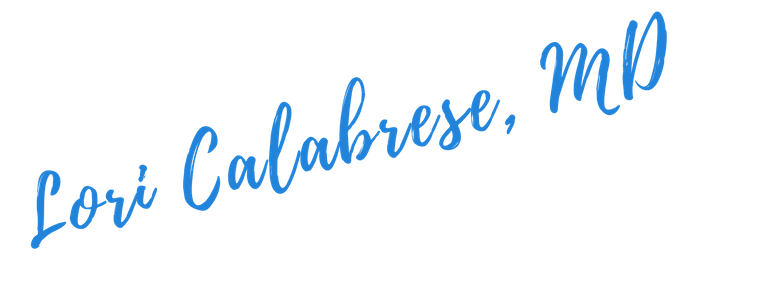
Obsessive-Compulsive Disorder or OCD is a term that is sometimes thrown around mistakenly. It’s sometimes used to describe someone’s careful behavior… you know, like careful organization, attention to detail, or a tendency toward cleanliness, which of themselves are actually normal behaviors. Many of us may be particular about these things without giving them a second thought. So to use the term in jest to poke fun at someone’s distinctive tidiness, for example, should be discouraged. You know why? Because doing so fuels stigma for one thing, and trivializes a serious medical condition. But neuroscience research is showing us that with OCD better treatment targets can give you a happier, more fulfilling life.
People with OCD have recurrent, intrusive, unwanted thoughts that just occur—like cardiac arrthymias—out of the blue and over and over, upsetting them, plagueing them and precipitating compulsive behaviors they use to relieve the anxiety spiked by their obsessive thoughts.

Obsessive thoughts can fall into certain categories — such as fear of harm coming to you or someone you love, fear of harming others or yourself, fear of illness or contamination, or preoccupation with things like patterns, numbers, morality, or gender identity. Insecurity about the future. Fear of throwing up.
And so many others.
The thoughts can have a certain theme for weeks or months… and the themes can vary within a day or over time. How often they occur can vary dramatically even for the same person. Their intensity can vary, too — and really affects the degree to which they intrude in your life.
These thoughts — and the behaviors they invoke — can be so upsetting and time consuming that they interfere with your ability to be on time, and be present, and function at work, school, or in your social life. In fact, they can interfere to such a degree that they cause intense discomfort and distress. And it’s the intensity and distress that sets apart those who have OCD and suffer from a disorder compared to those who are just a bit more hygienic or meticulous than their friends. There’s a BIG difference.
If you have OCD, unpleasant or fearful thoughts can fuel a reaction–and if the reaction is a behavior, we call that behavior a compulsive behavior. That reaction always starts and intends to relieve your anxiety. Right? But it becomes so repetitive and time consuming, it distresses you even more.
Compulsions can range from excessive doubting or asking (did she have an accident? is he cheating on me? did I do that right?) to excessive hand-washing, skin picking, or excessive safety checking — checking and rechecking the door knob, the knob on the stove, or locking and unlocking your car, or something else potentially dangerous. You could meticulously clean, re-read, re-write, or arrange objects. You do … and redo.
And there’s so much more.
There are also some other subdivisions of this disorder that you may not have even heard of: like harm OCD, obsessive slowness, tic-related OCD, and even pure obsessional OCD — where there are no observable compulsive actions but obsessive thoughts that just won’t stop.
Bottom line: many people suffer from a complex mixture of these types of obsessions and compulsions.
It’s surprising how often the diagnosis is missed.
It may surprise you to know that many people with OCD are aware that their intrusive thoughts aren’t true and that the compulsive actions they take don’t help. But they still can’t make them stop. And this causes them severe distress.
OCD: Better Treatment Targets Are Desperately Needed
Brain and Behavior Research Foundation presented a talk recently regarding the work of researchers to find more treatment options for those with OCD who are not helped by current available medications or psychotherapy. Because there’s a HUGE need.
Treatments for OCD
Serotonin Reuptake Inhibitors (SRIs) have been the only proven monotherapy, or singular form of medication treatment.
The serotonin system is pretty extensive. It’s involved in many different parts of the central nervous system: From the hippocampus, cerebral cortex, cerebellum, basal ganglia, thalamus, limbic cortex, and temporal lobe, to the rostral raphe nuclei, caudal raphe nuclei, and the spinal cord. Exhaustive, isn’t it?
Remission with SRIs is only 10-15% which is wonderful for those who achieve it, but the other 85-90%, need more help than that.
Those who achieve a partial response to an SRI experience a decrease in symptoms in 20-40% of cases… but only 20% still enjoy improvement after ten years.
Not great.
So it goes without saying how seriously we need to explore OCD better treatment targets that are effective. So here are some possible options on the horizon…
Augmentation strategies

Glutamatergic agents like Ketamine
Studies continue to investigate IV ketamine treatment for OCD. One study may show good responses, then another shows it’s less effective. Researchers are guessing this may be due to different types of symptoms needing different treatments. You can see that it’s so important to research more deeply — and study different patient populations — to see which ones do respond and which ones don’t. And to learn why.
Is it based on the types of symptoms the patient experiences? Fear of harming others vs. Fear of contamination? Or is it based on comorbidity, such as cognitive rigidity or the presence co-morbid depression or anxiety? Researchers continue to explore these questions.
A common augmentation strategy is with dopaminergic blockade agents, such as atypicals, as they’re called. (A shortcut for atypical antipsychotics–we often avoid saying the “antipsychotic” part and just call them atypicals.) Interestingly, these medicines fast-tracked for FDA approval treat psychotic disorders often have promising results with a variety of neuropsychiatric conditions.
They’re pretty amazing. They can get you unstuck, and get your thoughts unstuck. They’re like Goo Be Gone–you don’t quite know where all of those repetitive stuck thoughts went. They just seem to dissolve.
When the meds work.
Exposure and Response Prevention (ERP)
This form of therapy can be extremely effective, but it’s hard for some patients to see it through. It requires patient and consistent steps to bring about progress.
The steps required can cause so much anxiety that patients sometimes decide it’s not worth it to them… so they quit. It’s also hard to find enough skilled therapists to meet the needs of patients who need this kind of treatment. Here at Innovative Psychiatry we’re not able to offer this therapy to new patients. But we can offer other treatments.
For those who have not improved with medicine or therapy, surgery can be a consideration.
We don’t offer that either. Just sayin…
Ablative Neurosurgery
When medicines and psychotherapy bring no improvement, an option may be ablative neurosurgery. This involves surgically interrupting precise connections between the cortex and striatum.
The cortex is the part of the brain where you make decisions and decide what action you’re going to take. The striatum is important for carrying out those actions. So creating a disconnect between the two interrupts the cycle. This procedure can be 50-70% effective.
The problem with ablative neurosurgery is that it’s surgery…. and its non-reversible
It’s non-reversible.
Deep Brain Stimulation
Deep brain stimulation is high-frequency stimulation achieved by implanting electrodes deep into the brain that are powered by a device planted in the chest…something like a pacemaker for the brain.
When there’s a disturbance in the reward system of the brain it can lead to addiction, depression, and/or OCD.
And good outcomes have been achieved with deep brain stimulation.
For instance, the most common target site that’s been used for DBS is the ventral capsule/ventral striatum (VC/VS) and the nucleus accumbens (NAc) area. This area is approved for deep brain stimulation and is also being investigated for other purposes.
A newer target was utilized in a recent and exciting study. Keep reading…
A recent study (March 2019) seeking an alternative to ablation neurosurgery was conducted by Tyagi et al., and compared the effectiveness of deep brain stimulation at the ventral capsule/ventral striatal (VC/VS) region and the anteromedial subthalamic nucleus (amSTN) region in the same patients. They tested to determine the differences on mood and cognitive flexibility and associated neural circuitry. They also used cognitive behavioral therapy throughout the process.
Each patient received DBS in one region at a time, then at a separate time in the other region. Each patient received significant improvement of OCD symptoms following DBS to each site. But they didn’t get any real additional improvement after having stimulation to both sites at once.

But listen to this – It was so exciting to find that when patients received DBS to the VC/VS region, they experienced improved mood. When they received DBS to the limbic STN area, it improved their cognitive flexibility without affecting their mood at all.
Better Treatment Targets
So while DBS was effective for OCD symptoms at both targeted sites, this implies that if a patient is having more difficulty with co-morbid depression, then she might receive relief for both conditions following DBS to the VC/VS region. However, if the patient’s greatest difficulty is with rigid cognitive thinking and needs more cognitive flexibility, then the NAc region might be the preferred target for DBS. Very cool. How many more sites can be mapped for this?
All in all, this study opened up more possibilities to be investigated for treating OCD by isolating the specific sub-symptoms different people endure. Just imagine how much more effective OCD treatment could be if we were able to identify the targets in the brain where stimulation would relieve each OCD symptom.
OCD: Better Treatment Targets Will Improve Quality of Life
At Innovative Psychiatry, we’ve worked with a variety of treatments for OCD including SRIs, Transcranial Magnetic Stimulation (TMS), and IV ketamine treatment. Both TMS and ketamine treatment continue to be studied to improve outcomes for patients with OCD. There’s lots of work to be done still. And so we keep a close eye on advancements in neuroscience research to help us provide the most personalized care possible at this point.
With each passing year, we hope for more discoveries to guide us to more and more finely-tuned options.
Effective Treatment Includes Tools to Restore What’s Missing
Depression can be treated with IV ketamine treatment and brought to remission. But it doesn’t always happen that way. Your treatment might be challenged by underlying variations in serum levels or cerebrospinal levels of a certain folate or of hormones. In the same way, OCD treatment can be deterred by individual symptoms and the brain regions involved in a given person’s disorder.
This is why personalized treatment and care is so important. So let’s say it again:
One Size Doesn’t Fit ALL!!

We want to help you get better. We want you to have the freedom to pursue the life you want, the career you believe in, and build the relationships that will fulfill your life.
If you suffer from a disorder that has not responded to multiple treatment strategies, call us. We specialize in finding effective treatment for your individual symptoms. No matter what advances are being made in psychiatry and neuroscience, if you don’t feel better, it’s hard to see the relevance. We get that.
Call us. We’re here to help.

To the liberation of your best self,

Lori Calabrese, MD
I’ve been o c d. from a child. I’m 67 now and feel like I’m losing my mind. Places I have to live are making the o c d so much worse. I am begging for help. Thankyou.
Ketamine is now being actively studied for OCD in several academic centers around the country. In my practice, I find that using ketamine infusions for treatment-resistant depression often helps improve the frequency and intensity of OCD symptoms as well, especially when patients are on a good medication regimen for their OCD. Please reach out and call us if you would like to schedule a consultation at 860.648.9755.
I live in the UK and have severe treatment resistent OCD. Do you know of any clinical trials or treatments I could get involved in other than ERP and CBT combined with SSRI’s. Do you know of any safe ketamine trials?
Please contact Rupert McShane, Consultant Psychiatrist and Associate Professor, at Oxford; he may be aware of ketamine trials in UK for OCD. Best wishes!